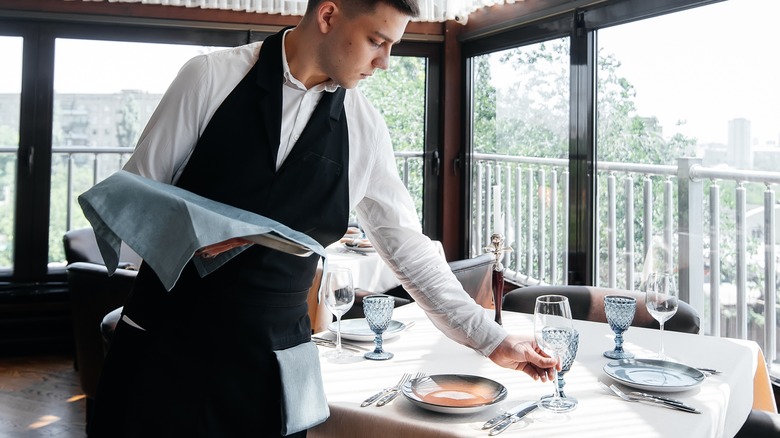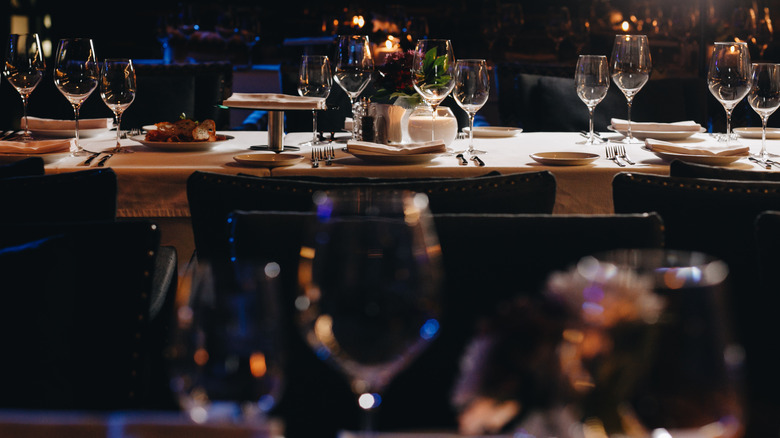The Silverware Etiquette Tip You Should Know For Fancy Restaurants
Say you have scored hard-to-get reservations for a table at a popular five-star restaurant. Crisp, white tablecloths are neatly arranged, and your table is set with a full assortment of polished silverware. Knowing what to do and how to conduct yourself when you sit down in such a setting can help you feel much more confident about the meal ahead.
Fancy restaurants can be daunting, especially when it feels like a certain decorum is expected. However, there are a few guidelines one should try to follow when eating in these finer establishments. Not only can table manners convey respect to those around you, but they can also help you avoid any awkwardness with your fellow diners. Simple actions, like the way you hold your menu or how you pick up your wine glass, could be the difference between a successful evening and being stared at uncomfortably by others. Instead of regarding dining etiquette as a chore, Hotel Montiboli describes manners like a language, with certain movements and behaviors carrying unique meanings.
Archaeological evidence hints that spoons were used in ancient Egypt as early as 1,000 B.C., and European table manners seem to have begun around the 11th century, according to the Richmond Times-Dispatch. The way in which we use these utensils has evolved overall since then, but in formal settings specifically, a particular standard has been set for the way in which they are used for diners to communicate with servers.
The language of cutlery
Hotel Montiboli provides guidance on some of the messages you can relay using your silverware. Need to take a break from the table? Your fork and knife should be set at the top portion of your plate in the shape of an upside-down V. If you did not like a dish, repeat the same utensil placement, but this time with the knife in between the tines of the fork. Loved the food? Lay the fork and knife together across your plate horizontally, facing to the right. For lengthy multiple-course dinners, the sign that you are ready for the next serving is the shape of a cross: your knife pointing left and the fork toward the top of the plate.
When you are all done, your utensils can operate like a silent code, advises etiquette expert Patricia Napier-Fitzpatrick (via Business Insider). "When you're finished, place the knife and fork together at the 10:20 position on the plate." The Art of Doing Stuff clarifies that the fork should be face up, and the edge of the knife should be directed towards the center of the plate. This should alert the wait staff to clear your place setting.
It sure can be a lot to think about, especially if you are also trying to remember what to do with your napkin. But, after a few experiences and a bit of repetition, you will feel comfortable at any table.

